- 中
- +86 13732210605
Author:Colorimeter
In real life, we often encounter such a situation. When shopping in shopping malls and supermarkets, the socks or gloves selected under the fluorescent lamp are not the same as before when they are bought home under the incandescent lamp. In color printing, the printing color recognized by the printing factory and customers during trial printing is found to have deviation, sometimes even large color difference, in the new observation environment when printing in large quantities with the same materials, equipment and operation technology, which affects the printing quality. This phenomenon is called homochromatic heterospectrum. In short, it means that the colors are the same, but the spectral composition is different. The jumping lamp and homochromatic heterospectrum, which are often said in the printing and dyeing industry, are a concept.

The same sample shows different colors under different light sources
The fundamental reason for this phenomenon is that the spectral reflectance of materials is different, so the colors are different under different light sources. So how to avoid the phenomenon of same color and different spectrum in the actual production process?
First of all, we should understand that there are three elements that determine the surface color of an object: object, light source and observer.

Three elements of color formation
Only when these three elements are exactly the same can the surface color of the object be completely consistent. Observers are often the same, so we need to control the consistency of variable element objects or light sources to avoid homochromatic spectrum.
The first method is to unify the light source. We can use the same environment as customers' common places and their lighting conditions to carry out color matching to realize conditional isochromism. This method has high requirements for the environment such as light source, and can not really avoid the phenomenon of same color and different spectrum.
The second method is to unify the spectral reflectance of objects. As long as the spectral reflectance of the object is consistent, the color of the two objects must be consistent under any light source conditions.
The color can be seen intuitively, but the spectral reflectance can not be observed with the naked eye. It needs to be identified with the help of instruments.
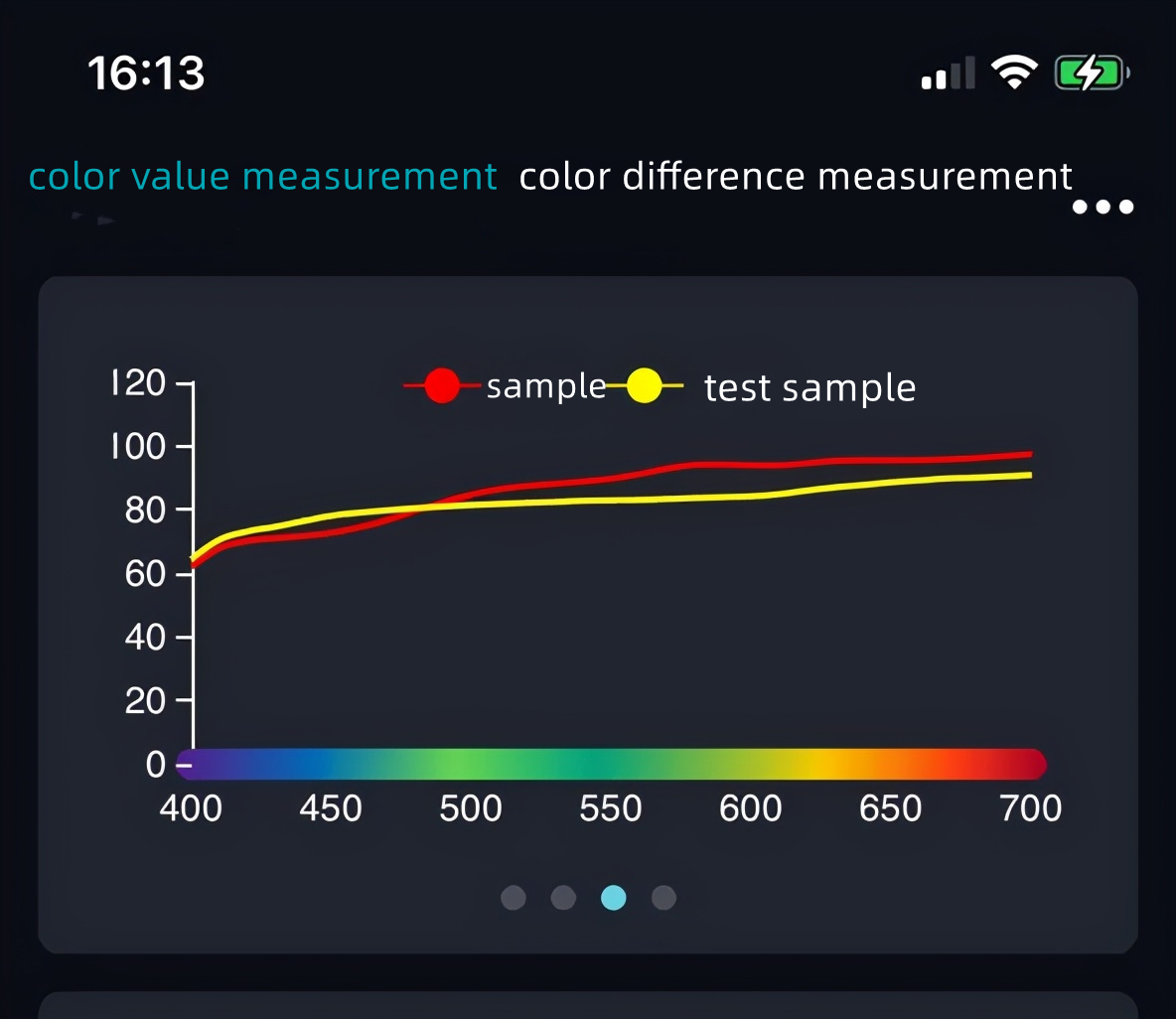
App spectral reflectance display
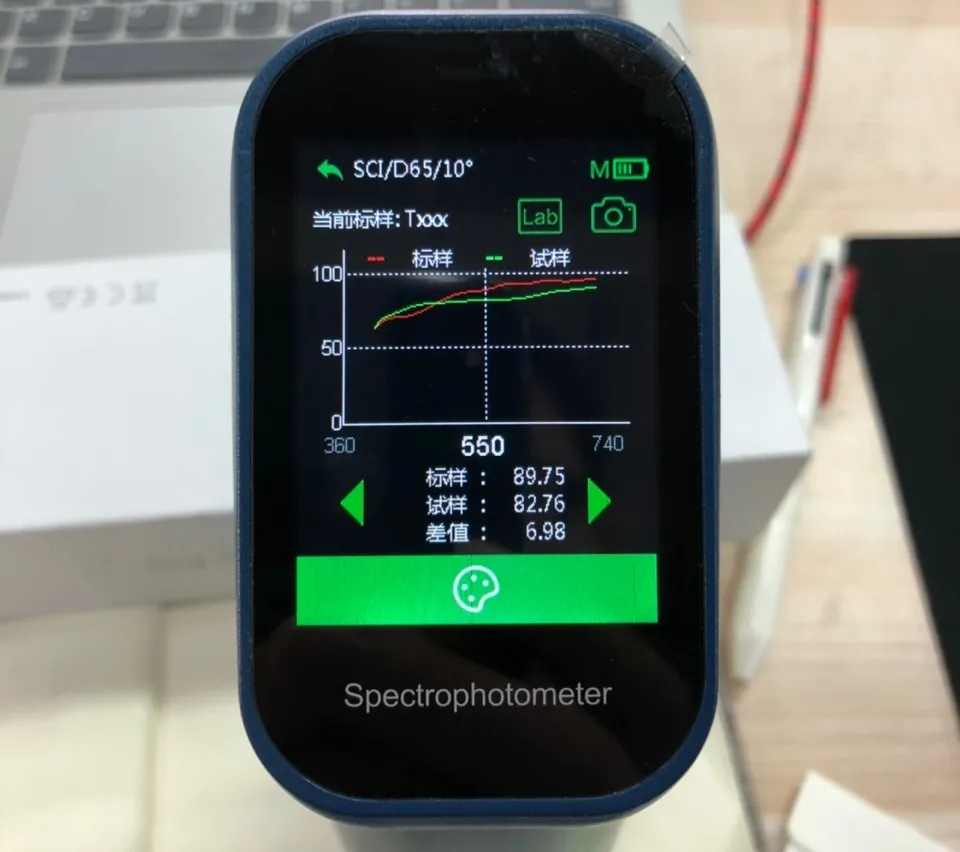
Instrument spectral reflectance display
The spectral color measurement series products developed by CHNSpec can not only directly read the color value, but also calculate the spectral reflectance, which greatly reduces the workload of color matching workers and helps color matching workers improve the accuracy of color matching.
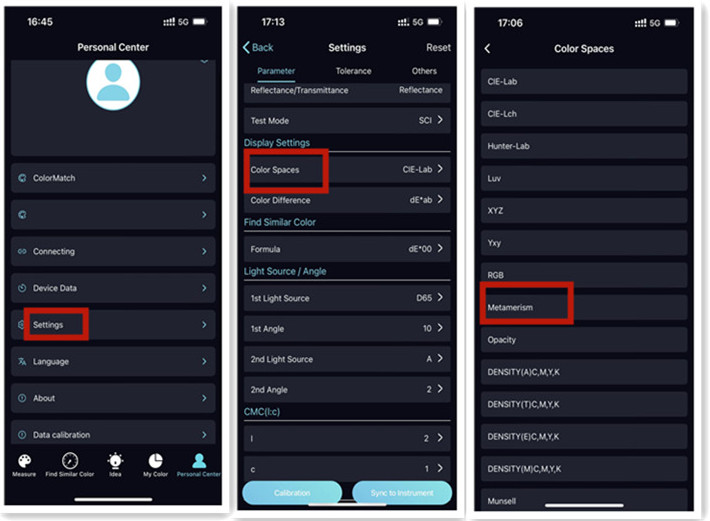
In app, you can change the settings and select the same color and different spectrum
It can also measure the "same color and different spectrum" index. As shown in the following measurement interface, it can provide D65 / 10 ° and a / 2 ° measurement conditions to analyze the same color and different spectrum, and simulate the two test environments under sunlight and incandescent lamp respectively. The larger the index, the more serious the same color and different spectrum.
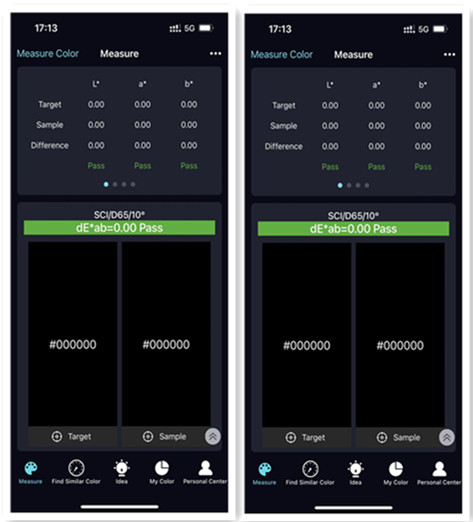
It can directly reflect the difference of samples under different light source conditions
At the same time, in the colormeter app, you can freely switch the required light source type and angle to meet different test requirements.
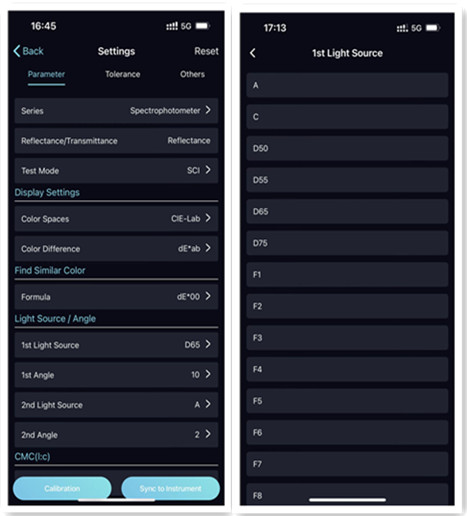
The spectrochromatic aberration instrument adopts the spectroscopic principle, which can accurately measure the spectral curve of the color without being affected by the external light source. Through the similarity of the color spectral curve, the color similarity between the standard sample and the sample can be determined. Spectrophotometer can help you solve the problem of different spectrum of the same color.

